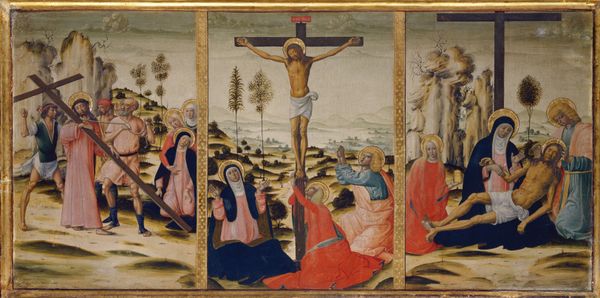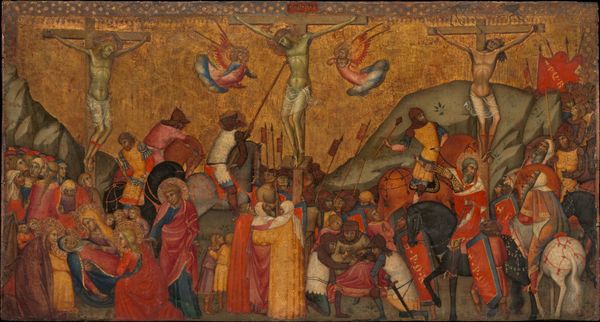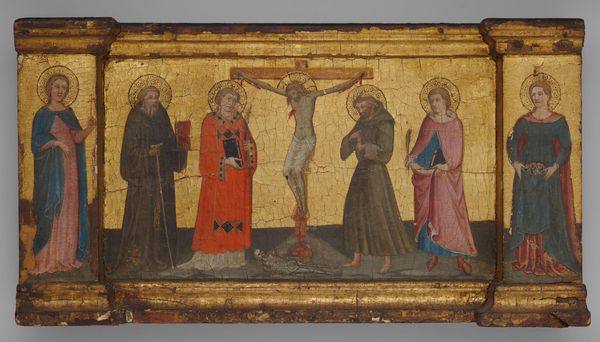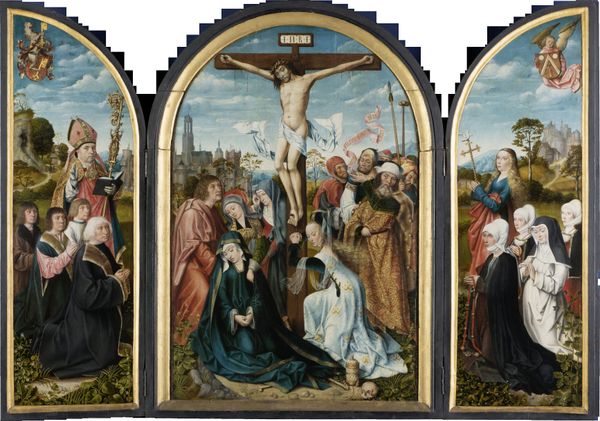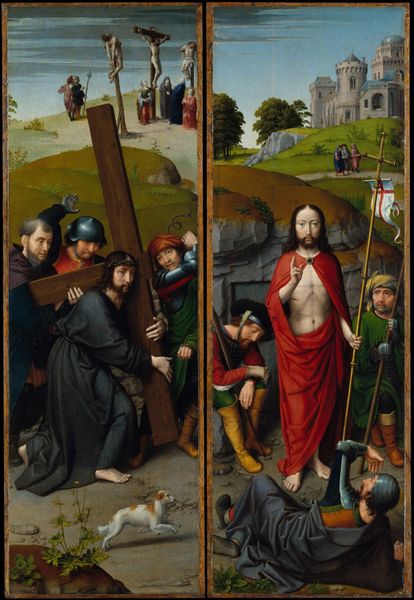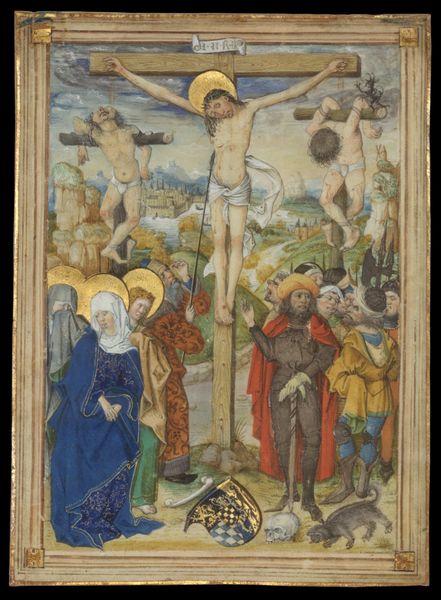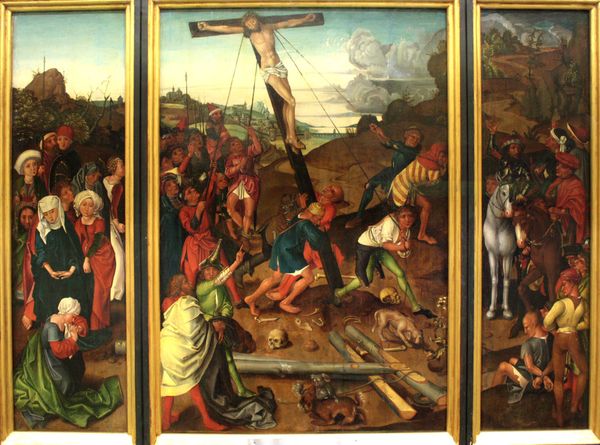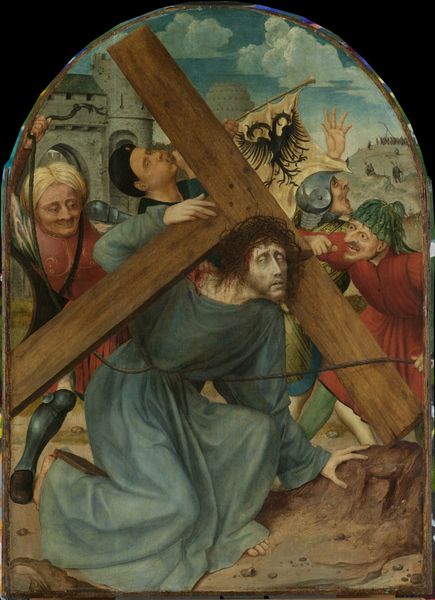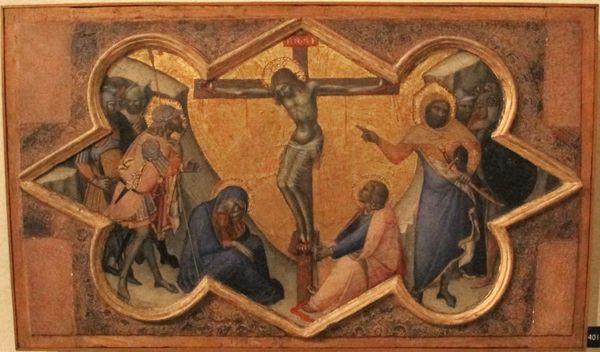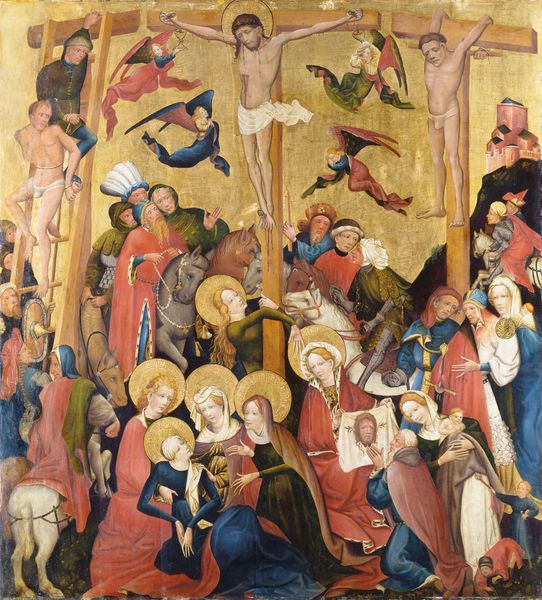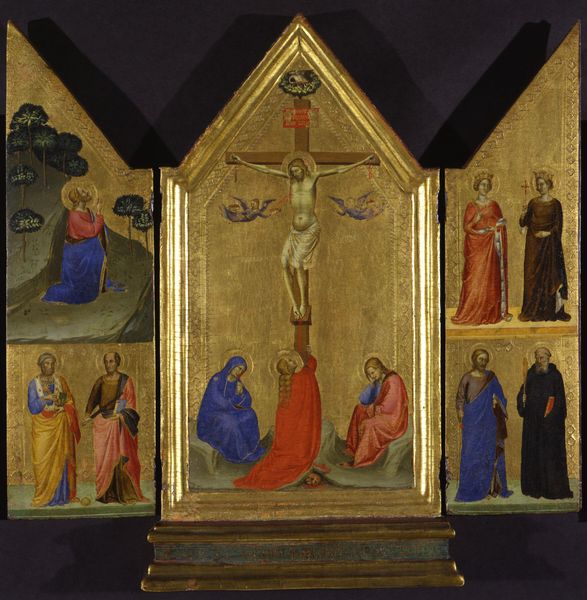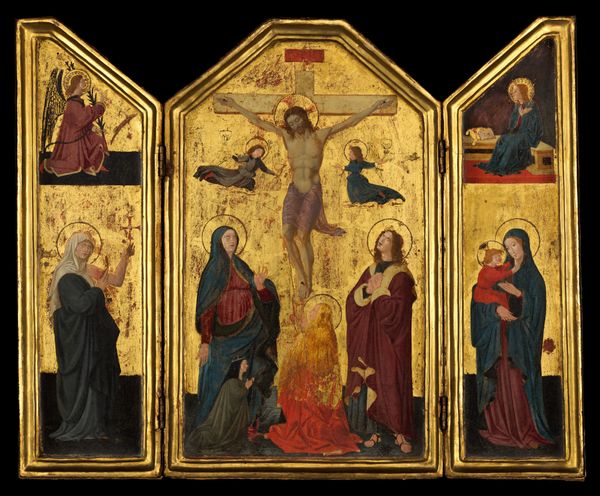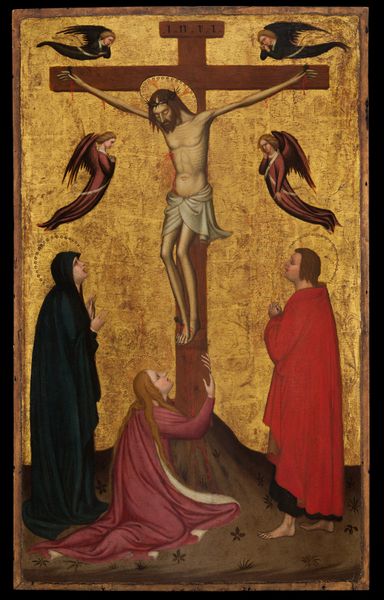
panel, tempera, painting
#
portrait
#
medieval
#
panel
#
allegory
#
tempera
#
painting
#
figuration
#
cross
#
history-painting
#
international-gothic
#
angel
Dimensions: Three panels, each 54 1/2 x 23 in. (138.4 x 58.4 cm)
Copyright: Public Domain
Curator: Standing before us is "The Pérussis Altarpiece," a tempera-on-panel work created around 1480 by Nicolas Froment. It's currently housed here at the Metropolitan Museum of Art. Artist: Wow, what strikes me is the intensity of color, almost jewel-like! And the expressions are so earnest, so focused. It feels like a sacred tableau, but there’s also a distinct humanness about it. Curator: That’s a great observation. Froment was adept at blending the Late Gothic style with a nascent Renaissance sensibility. Note the inclusion of what appears to be a donor portrait on each wing flanking the crucifixion scene, reflecting a desire for personalized devotion and immortalization. Artist: So, a celestial group portrait! I notice the donor figures are kneeling with such vulnerable and palpable prayerfulness. One even has a sword at his hip, a sign of their rank, no doubt. Though even the knight is at the mercy of his Maker in a world filled with mystery and uncertainty, I presume. Curator: Exactly. The altarpiece would have served as a focal point for both private and communal worship, demonstrating the piety and wealth of the Pérussis family who commissioned the piece. Consider its place within the socio-political landscape of Provence in the late 15th century. Altarpieces such as this bolstered family prestige and demonstrated devotion amid political intrigue and economic transformations. Artist: And that skull at the foot of the Cross! A rather morbid touch, but honest and evocative. Such imagery seems intended to inspire solemn reflection on the inevitability of mortality amid lives marked by luxury and social rank. But do you think there’s a slight dissonance in how these aristocratic figures inhabit the same pictorial plane as Christ? Curator: Dissonance, maybe not; visual strategy, absolutely. This was a period where patrons increasingly sought to align themselves visually and spiritually with the divine. Artist: It's funny, despite the meticulous detail and theological weight, this artwork feels quite immediate. Like I can sense the artist’s hand at work. Maybe because the figures seem less idealized, and more like everyday faces caught in extraordinary circumstances? Curator: Froment certainly had an uncanny ability to capture raw emotion and subtle portraiture within prescribed religious parameters, demonstrating a pivotal moment where individual expression began subtly infiltrating religious iconography. I have a feeling that Froment knew this, as does the modern viewer of the altarpiece centuries later.
Comments
No comments
Be the first to comment and join the conversation on the ultimate creative platform.
